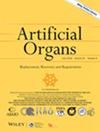Evidence of Stem Cell Entrapment in AN69 Membranes During Continuous Renal Replacement Therapy
Abstract
Background
Continuous renal replacement therapy (CRRT) is increasingly employed in pediatric intensive care units (PICUs) for managing both renal and non-renal conditions, including sepsis through cytokine removal. Allogeneic hematopoietic stem cell transplantation (allo-HSCT) is a critical treatment for inherited bone marrow syndromes but poses challenges when performed alongside extracorporeal therapies like CRRT. This case explores the interaction between hematopoietic stem cells and AN69 membranes during CRRT in a pediatric patient undergoing allo-HSCT amid septic shock.
Methods
A 10-year-old boy with bone marrow failure of unknown etiology and chronic kidney disease underwent allo-HSCT from a fully matched sibling donor. The patient developed septic shock following a reduced-intensity conditioning regimen and was managed with continuous venovenous hemodiafiltration using an AN69 membrane. During the allo-HSCT infusion, the CRRT membrane became clogged, prompting immunohistochemical analysis of the AN69 membrane to investigate potential HSC entrapment. CD34-positive cells and fibronectin expression on the membrane were assessed using staining protocols.
Results
Despite severe septic shock and potential HSC entrapment in the AN69 membrane, the patient achieved full donor chimerism with 97% hematopoietic engraftment by day nineteen post-HSCT. Immunohistochemical analysis revealed the presence of CD34-positive HSCs and strong fibronectin staining on the clogged AN69 membrane, indicating significant interaction and entrapment of stem cells.
Conclusion
Allo-HSCT can be performed successfully in pediatric patients with severe septic shock requiring CRRT, offering a potentially life-saving option in urgent transplant situations. This case highlights that although HSPCs can be entrapped on AN69 membranes, engraftment was not compromised. Our findings provide novel insights into HSPC interactions with AN69 membranes during CRRT, and further studies are needed to quantify stem cell loss and explore its clinical implications.

 求助内容:
求助内容: 应助结果提醒方式:
应助结果提醒方式:


